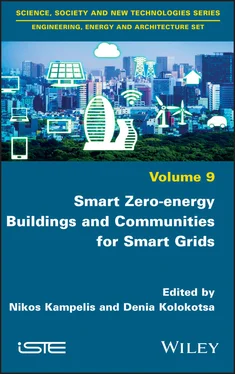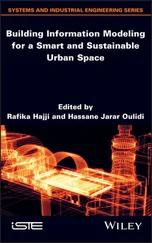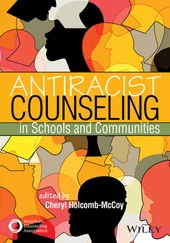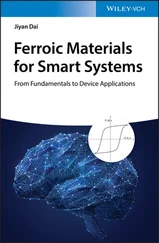237 229
238 230
239 231
240 232
241 233
242 234
243 235
244 236
245 237
246 238
247 239
248 240
249 241
250 242
251 243
252 244
253 245
254 246
255 247
256 248
257 249
258 250
259 251
260 252
261 253
262 254
263 255
264 256
265 257
266 258
267 259
268 260
269 261
270 262
271 263
272 264
273 265
274 267
275 268
276 269
277 270
278 271
279 272
280 273
281 274
282 275
283 276
284 277
285 278
286 279
287 280
288 281
289 283
290 284
291 285
292 287
293 288
294 289
295 291
296 292
297 293
298 294
299 295
300 296
301 297
302 298
303 299
Engineering, Energy and Architecture Set
coordinated by
Lazaros E Mavromatidis
Volume 9
Smart Zero-energy Buildings and Communities for Smart Grids
Edited by
Nikos Kampelis
Denia Kolokotsa

First published 2022 in Great Britain and the United States by ISTE Ltd and John Wiley & Sons, Inc.
Apart from any fair dealing for the purposes of research or private study, or criticism or review, as permitted under the Copyright, Designs and Patents Act 1988, this publication may only be reproduced, stored or transmitted, in any form or by any means, with the prior permission in writing of the publishers, or in the case of reprographic reproduction in accordance with the terms and licenses issued by the CLA. Enquiries concerning reproduction outside these terms should be sent to the publishers at the undermentioned address:
ISTE Ltd
27-37 St George’s Road
London SW19 4EU
UK
www.iste.co.uk
John Wiley & Sons, Inc.
111 River Street
Hoboken, NJ 07030
USA
www.wiley.com
© ISTE Ltd 2022
The rights of Nikos Kampelis and Denia Kolokotsa to be identified as the authors of this work have been asserted by them in accordance with the Copyright, Designs and Patents Act 1988.
Any opinions, findings, and conclusions or recommendations expressed in this material are those of the author(s), contributor(s) or editor(s) and do not necessarily reflect the views of ISTE Group.
Library of Congress Control Number: 2021948475
British Library Cataloguing-in-Publication Data
A CIP record for this book is available from the British Library
ISBN 978-1-78630-684-5
Smart and zero-energy buildings and communities have a major role to play in the evolution of the building sector and of the electric grid (i.e. the smart grid) toward the necessary transition in line with current carbon neutrality policies, climate change mitigation and adaptation. In this sense, the goal for the reduction of greenhouse emissions in the built environment can be pursued through a holistic approach whereas the consumption of energy in buildings is drastically reduced. State of the art in this field relates, on the one hand, to the implementation of energy efficient design methodologies and innovative technologies which guarantee the maximum energy saving potential in buildings. On the other hand, the advancement of ICT technologies, along with the integration of renewables and storage at building and at district level, provide the means for zero or positive net energy buildings and districts by producing, storing, managing and exchanging energy at the local level. In this direction, the challenges related with the volatility of renewable energy sources at grid level can become more manageable. New and emerging roles and services linking the building sector with smart grids in the future should be transparent and promote sustainability. This requires inspiring, fair, effective and innovative policies providing the roadmap for this transition and major research, innovation and training initiatives that will (1) support the market in providing solutions supporting mass scale deployment of environmentally friendly, energy efficient technologies and (2) educate the society about the importance of this transition and the role each and every one of us has to play.
This book is a collaborative work between research and industrial partners in the framework of the Smart GEMS Marie Curie project (2015–2020). Research and training activities in Smart GEMS were implemented through the physical mobility (secondments) of staff between academic and industrial partners during a five-year period. It provided academic staff with the opportunity to expand their views by working with leading companies in the fields of advanced building/district energy management, renewable technologies and storage integration, as well as in the production of smart metering systems. Likewise, industrial personnel had the opportunity to work in different academic environments across Europe and establish a more coherent understanding about the broader scientific and technological capabilities outside their field of specialization, thus complementing their field of expertise and in various cases diving deeper into co-developing and exploring state-of-the-art techniques and methodologies. This book provides a thorough reading of many of the concepts dealt with in Smart GEMS through the close collaboration of industrial and academic partners. Adding to the first publication, entitled Smart Buildings, Smart Communities and Demand Response , published by ISTE Ltd and John Wiley & Sons, this book provides complementary material and an insight into the fields of smart grids, smart and zero-energy buildings, integrated design, data analysis and energy modeling, indoor environmental quality, user engagement and energy storage in smart communities and smart grids.
This book focuses on smart nearly zero-energy buildings (NZEB), smart communities and smart grids. Therefore, it is mainly valuable for experts, professionals and researchers with an interest in (1) energy efficient buildings and communities; (2) smart building systems and innovative applications; and (3) integration of renewable energy technologies and storage at the building and district level.
First, smart grids are defined and their role in integrating more renewable energy sources, smart buildings and distributed generators, thereby revolutionizing the electric power network, is presented. Concepts such as smart and zero-energy buildings and communities along with smart metering, demand response and distributed systems are outlined to provide the state of the art, opportunities and the challenges for minimizing buildings' carbon footprint.
Second, the main principles of integrated design and decision making for smart zero-energy buildings and grids are documented and explored with the aid of best practice examples. Benefits, barriers and methodologies for addressing the potential and evaluating the impact of integrated design are explained.
In Chapter 3, with the aid of case studies, we present data analysis and energy modeling of smart and zero-energy buildings and communities for the evaluation and management of energy operations in buildings integrating innovative renewable energy technologies.
In Chapter 4, the impact of human presence to the energy consumption and indoor air quality within an educational building of the National University of Singapore (NUS) is investigated. An experimental campaign took place and data was analyzed with respect to the energy consumption and air quality of three rooms, each one with different usage and occupancy. The impact of different occupancy patterns on the energy demand, the illuminance of the building, as well as the internal levels of temperature, relative humidity and CO 2, are examined.
Читать дальше













